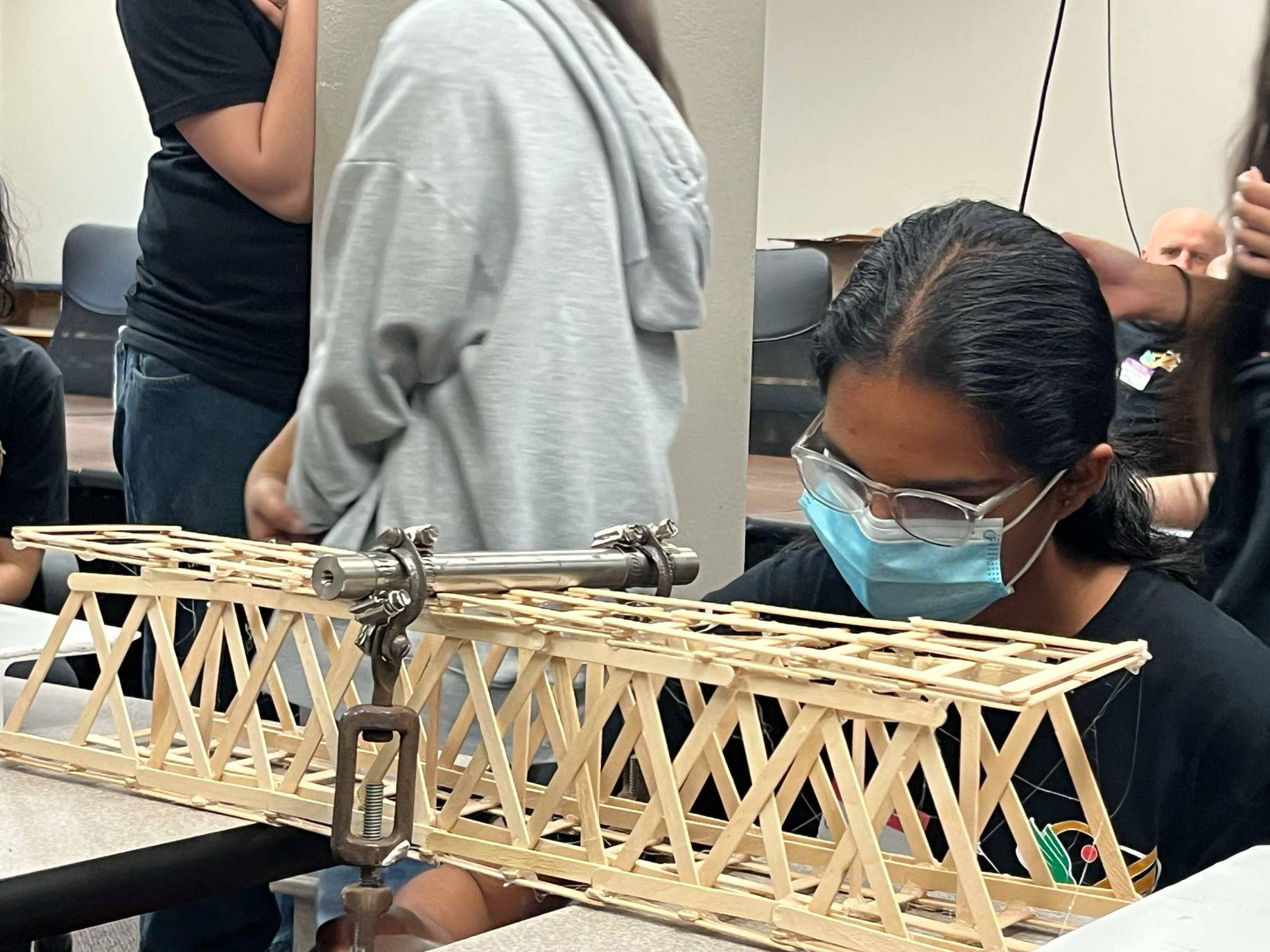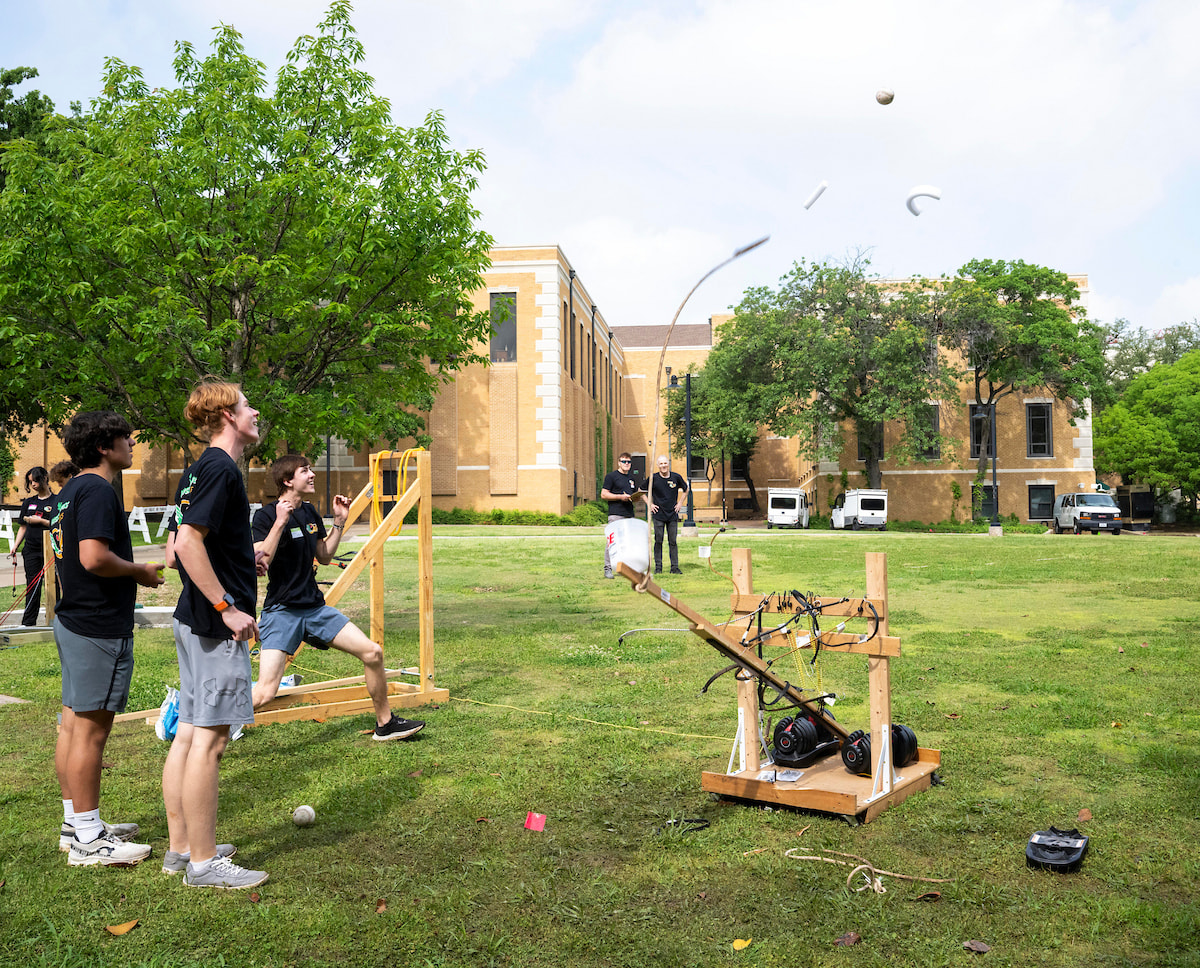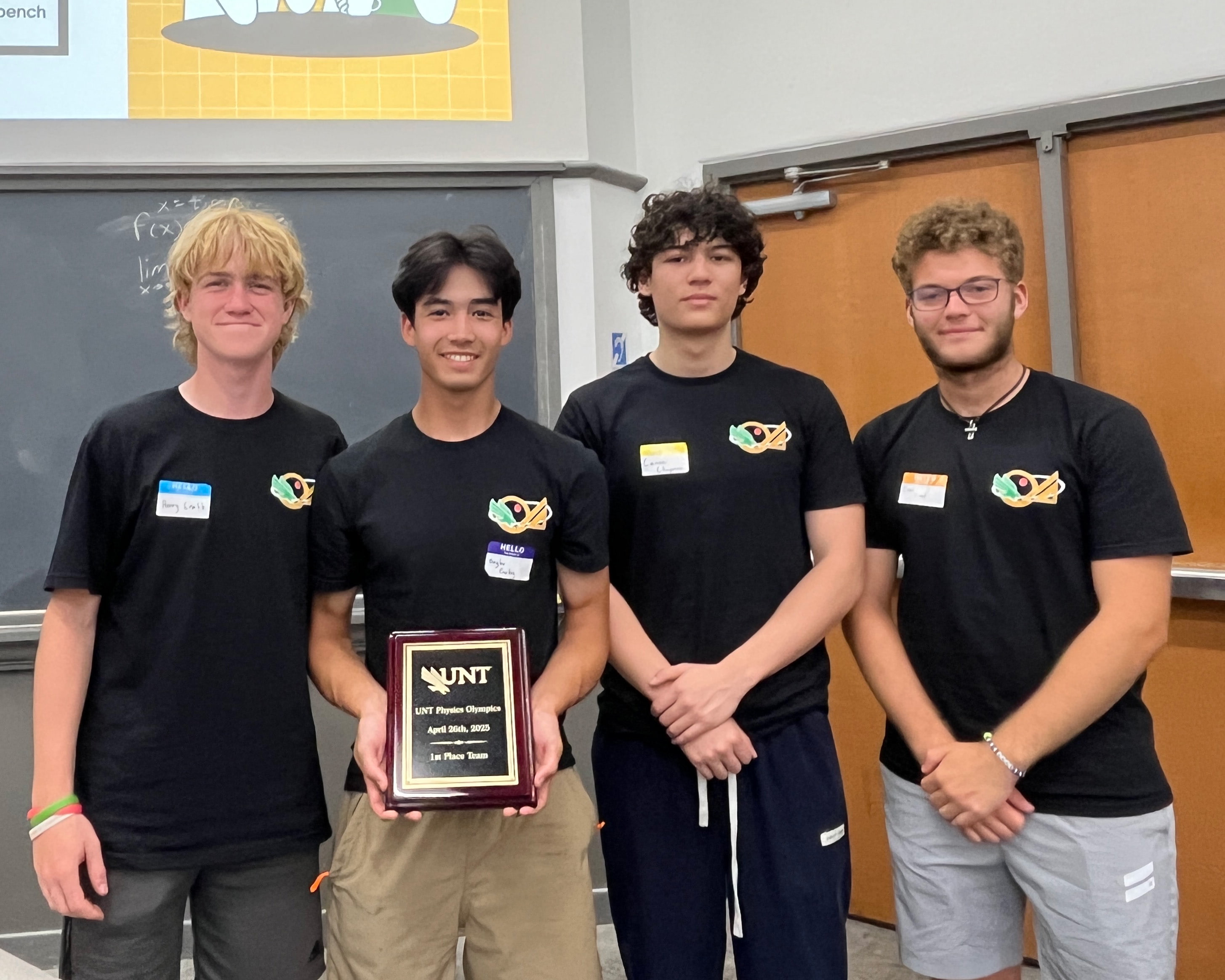
DENTON (UNT), Texas — Giant catapults and egg drops were just some of the hands-on challenges high schoolers tackled during the annual Physics Olympics at the University of North Texas.
Hosted by the Department of Physics, Professor Sandra Quintanilla organized the spring event with a team comprised of the Physics Olympics faculty committee, physics staff and Society of Physics (SPS) officers. The event took physics beyond the classroom and showed that it can be fun.
This year the Olympics welcomed five teams total from Eagle Mountain-Saginaw, Grand Prairie and Prosper Independent School Districts. A full day of activities ran from about 9 a.m. to past 5 p.m. and included the catapult launch, egg drop, bridge-building challenge and a physics-themed scavenger hunt.

“The catapult was definitely the best part,” said 11th grader Henry Craft from Boswell High. “Watching them launch was awesome.”
For the catapult contest, each team designed their own machine, which had to use an 8-foot arm, bungee cords for torque and a way to launch from five feet away. Teams had three shots to hit a target 40 meters away, with the best two scores averaged and plugged into a physics formula.
“Every activity score involved a physics-based formula,” said Ariel Dumond, of SPS treasurer. “We really wanted to show the high school students how physics can be applied to everything.”
Throughout the day, students participated in live physics demonstrations and visited campus labs that work with nanowires, laser spectroscopy and ion beams. They also viewed the “Seeing!” show in the UNT Sky Theater, presenting the journey of a photon from a star to the retina of a person’s eye.
“The whole day has been a great opportunity for the kids,” said South Grand Prairie High School teacher Erick Berdugo. “It gives them a chance to show off what they’ve learned and see what else they can still learn.”
The most dramatic event was the scavenger hunt. Teams raced through UNT’s Physics building, solving physics problems to reveal the next room and question. They were timed, and their score depended on the number of attempts to answer correctly and how many they got right in 30 minutes.

Before the day ended, students participated in more demonstrations, including a Rubens tube, which uses flames to visually show sound wave patterns.
After scores were tallied by Professor Arkadii Krokhin, gold medals went to the 11th-grade team from W. E. Boswell High School. As part of their prize, each member of the team received a $1,000 scholarship to UNT if they pursue a physics degree. Though some said they aren’t thinking about college yet, all agreed the Olympics was a great way to spend their Saturday and expressed interest in starting a physics club back at their high school.
“It was really exciting to use everything I’ve learned this year in a competition,” said Skylar Gurley. “I know I want to keep studying physics.”